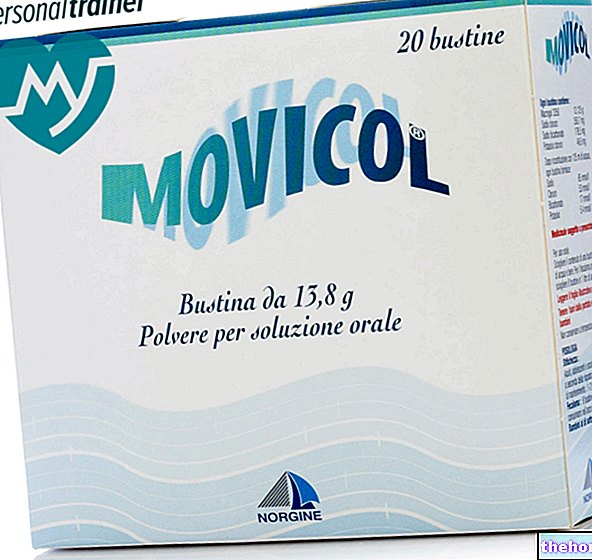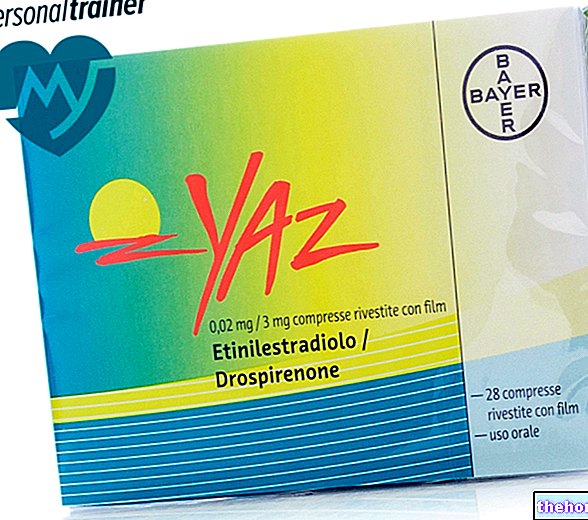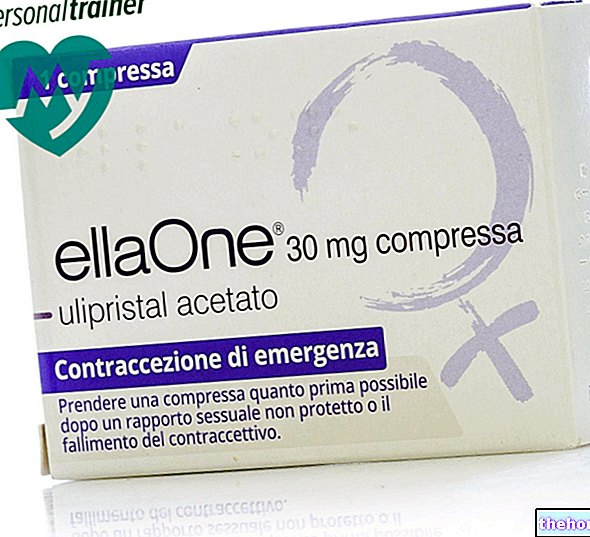Active ingredients: Bimatoprost
LUMIGAN 0.1 mg / ml eye drops, solution
Lumigan package inserts are available for pack sizes:- LUMIGAN 0.1 mg / ml eye drops, solution
- LUMIGAN 0.3 mg / ml eye drops, solution
Indications Why is Lumigan used? What is it for?
LUMIGAN is an antiglaucoma drug. It belongs to a category of drugs called prostamides.
LUMIGAN eye drops are used to reduce elevated eye pressure. This medicine can be used alone or together with other eye drops called beta-blockers, which also serve to reduce the pressure in the eye.
The eye contains a clear, water-based liquid that nourishes its interior. This liquid is constantly eliminated from the eye and new liquid is produced to replace the eliminated one. If the liquid is not cleared quickly enough, the pressure inside the eye rises. This medicine serves to increase the amount of fluid that is excreted, thus reducing the pressure in the eye. Elevated eye pressure, if not reduced, can cause a disease called glaucoma and can eventually cause vision damage.
Contraindications When Lumigan should not be used
Do not use LUMIGAN 0.1 mg / ml
- if you are allergic (hypersensitive) to bimatoprost or any of the other ingredients of LUMIGAN.
- if you have had to stop using the eye drops in the past due to an undesirable effect from the preservative benzalkonium chloride.
Precautions for use What you need to know before you take Lumigan
Talk to your doctor or pharmacist before using LUMIGAN 0.1 mg / ml.
Consult your doctor if:
- suffer from respiratory problems
- have liver or kidney problems
- have been operated on for cataracts in the past
- suffer from dry eyes
- have or have had problems with the cornea (the clear front part of the eye)
- wear contact lenses (see "Important information about some of the ingredients of LUMIGAN 0.1 mg / ml")
- have or have suffered from hypotension or bradycardia
- have had a "viral infection or" eye inflammation.
LUMIGAN can cause darkening and lengthening of the eyelashes, it can also darken the eyelids. Over time, the color of the iris may also darken. These changes can be permanent and are more noticeable if only one eye is treated.
Children and adolescents
LUMIGAN has not been tested on patients under the age of 18 therefore it should not be used on patients under the age of 18.
Interactions Which drugs or foods can change the effect of Lumigan
Tell your doctor or pharmacist if you are taking, have recently taken or might take any other medicines.
Warnings It is important to know that:
Pregnancy and breastfeeding
If you are pregnant or breast-feeding, think you may be pregnant or are planning to have a baby, ask your doctor or pharmacist for advice before taking this medicine.
LUMIGAN can pass into breast milk, therefore it is advisable not to breastfeed during treatment with LUMIGAN.
Driving and using machines
After administration of LUMIGAN, there may be a slight transient visual clouding.
In this case, do not drive or operate machinery until your vision is clear again.
Important information about some of the ingredients of LUMIGAN 0.1 mg / ml
Do not use the drops while wearing contact lenses. After administering the eye drops, wait 15 minutes before putting your contact lenses back in. The preservative in LUMIGAN, called benzalkonium chloride, can cause eye irritation and can discolor soft contact lenses.
Dosage and method of use How to use Lumigan: Dosage
Always use this medicine exactly as your doctor or pharmacist has told you. If in doubt, consult your doctor or pharmacist.
LUMIGAN should only be applied to the eyes. The recommended dose is one drop of LUMIGAN once a day, in the evening, in each eye to be treated.
If you use LUMIGAN with another eye medicine, apply LUMIGAN eye drops first and wait 5 minutes before applying the second eye medicine.
Do not use it more than once a day, as the effectiveness of the treatment may be reduced.
Instructions for Use:
Do not use the bottle if the guarantee seal on the cap is not intact before use.
- Wash your hands. You put your head back and look up.
- Slowly pull the lower lid down to form a small pocket.
- Turn the bottle upside down and apply gentle pressure to release one drop of eye drops for each eye to be treated.
- Let go of the lower lid and close the eye for 30 seconds.
Wipe off any excess that runs down your cheek.
If the drop does not enter the eye, repeat the operation.
To avoid infections and injuries to the eye, the tip of the bottle should not touch the eye or come into contact with other surfaces. After using the bottle, close it tightly by screwing the cap back on.
If you forget to use LUMIGAN 0.1 mg / ml
If you forget to use LUMIGAN, as soon as you remember, just put on one drop and then go back to your normal dosing times. Do not take a double dose to make up for a forgotten dose.
If you stop taking LUMIGAN 0.1 mg / ml
For it to work properly, LUMIGAN must be used every day. If you stop using LUMIGAN, your eye pressure may rise, so you should talk to your doctor before stopping this treatment.
If you have any further questions on the use of this medicine, ask your doctor or pharmacist.
Overdose What to do if you have taken too much Lumigan
If you use more LUMIGAN than you should, this is unlikely to cause serious consequences. Give your next dose at the usual time. If this worries you, consult your doctor or pharmacist.
Side Effects What are the side effects of Lumigan
Like all medicines, this medicine can cause side effects, although not everybody gets them.
If you get any side effects, talk to your doctor or pharmacist. This includes any possible side effects not listed in this leaflet.
Very common side effects
These effects could occur in 1 or more in 10 patients.
Effects on the eye
- Slight redness (up to 29% of people)
Common side effects
These effects could occur in 1 to 9 out of 100 patients.
Effects on the eye
- Small ulcers on the surface of the eye, with or without inflammation
- Irritation
- Itchy eyes
- Eyelash extensions
- Irritation when giving the drops to the eyes
- Eye pain
Undesirable effects on the skin
- Red itchy eyelids
- Browning of the skin around the eye
- Growth of hair around the eye
Uncommon side effects
These effects could occur in 1 to 9 out of 1,000 patients.
At the expense of the eye
- Darkening of the color of the iris
- Tired eyes
- Swelling of the surface of the eye
- Blurred vision
- Loss of eyelashes
At the expense of the skin
- Dryness
- Crusting on the edge of the eyelid
- Swelling of the eyelid
- Itching Affecting the body
- Headache
- Feeling unwell
Side effects the frequency of which is not known
At the expense of the eye
- Macular edema (swelling of the retina at the back of the eye which can lead to worsening of vision)
- Darkening of the eyelids
- Sunken eyes
- Dry eye Affected by the body
- Asthma
- Worsening of asthma
- Worsening of the lung disease called chronic obstructive pulmonary disease (COPD)
- Shortness of breath
- Symptoms of an allergic reaction (swelling, red eye and rash)
In addition to the side effects of LUMIGAN 0.1 mg / ml, the following side effects have been observed with another medicine containing a higher concentration of bimatoprost (0.3 mg / ml):
- Dizziness
- Ocular burning
- An allergic reaction to the eye
- Inflamed eyelids
- Difficulty seeing sharp images
- Worsening of vision
- Swelling of the transparent layer that covers the surface of the eye
- Foreign body sensation in the eye
- Sensitivity to light
- Tearing
- Sticky eyes
- Darker lashes
- Bleeding of the retina
- Inflammation inside the eye
- Cystoid macular edema (swelling of the retina inside the eye leading to worsening of vision)
- Eyelid spasms
- Narrowing of the eyelid, moving away from the surface of the eye
- Redness of the skin around the eye
- Increased blood pressure values
- Weakness
- Increased liver function values in blood tests
Other side effects reported with eye drops containing phosphates.
In very rare cases, some patients with severe damage to the clear layer of the front of the eye (the cornea) have developed opaque areas on the cornea due to calcium build-up during treatment.
Reporting of side effects
If you get any side effects, talk to your doctor or pharmacist. This includes any possible side effects not listed in this leaflet. You can also report side effects directly via the national reporting system listed in Appendix V. By reporting side effects you can help provide more information on the safety of this medicine.
Expiry and Retention
Keep this medicine out of the sight and reach of children.
Do not use this medicine after the expiry date which is stated on the bottle label and carton after EXP. The expiry date refers to the last day of the month.
Throw away the bottle at the latest 4 weeks after first opening, even if it still contains some drops. This will avoid infections. To help you remember, write the date you first opened in the space reserved on the box.
Do not throw any medicines via wastewater or household waste. Ask your pharmacist how to throw away medicines you no longer use. This will help protect the environment.
Deadline "> Other information
What LUMIGAN 0.1 mg / ml contains
- The active ingredient is bimatoprost. One ml of solution contains 0.1 mg of bimatoprost.
- The other ingredients are benzalkonium chloride (preservative), sodium chloride, sodium phosphate base heptahydrate, citric acid monohydrate and purified water. Small amounts of hydrochloric acid or sodium hydroxide may be added to maintain a normal acidity (pH) level.
Description of what LUMIGAN 0.1 mg / ml looks like and contents of the pack
LUMIGAN is a clear, colorless eye drop supplied in a pack containing 1 plastic bottle or 3 plastic bottles, each with a screw cap.
Each bottle is about half full and contains 3 milliliters of solution, enough for 4 weeks of use.
Not all pack sizes may be marketed.
Source Package Leaflet: AIFA (Italian Medicines Agency). Content published in January 2016. The information present may not be up-to-date.
To have access to the most up-to-date version, it is advisable to access the AIFA (Italian Medicines Agency) website. Disclaimer and useful information.
01.0 NAME OF THE MEDICINAL PRODUCT -
LUMIGAN 0.1 MG / ML EYE DROPS, SOLUTION
02.0 QUALITATIVE AND QUANTITATIVE COMPOSITION -
1 ml of solution contains 0.1 mg of bimatoprost.
Excipient with known effects:
One ml of solution contains 0.2 mg of benzalkonium chloride.
For the full list of excipients, see section 6.1.
03.0 PHARMACEUTICAL FORM -
Eye drops, solution.
Colorless solution.
04.0 CLINICAL INFORMATION -
04.1 Therapeutic indications -
Reduction of elevated intraocular pressure in chronic open angle glaucoma and ocular hypertension in adults (as monotherapy or as add-on therapy to beta-blockers).
04.2 Posology and method of administration -
Dosage
The recommended dose is one drop in the affected eye (s), once a day, to be administered in the evening. The dose should not exceed one daily application, as more frequent administrations may reduce the hypotensive effect on blood pressure. eye.
Pediatric population
The safety and efficacy of LUMIGAN in children aged 0 to 18 years have not yet been established.
Patients with hepatic and renal dysfunction:
LUMIGAN has not been studied in patients with renal dysfunction, or moderate to severe hepatic dysfunction, therefore it should be used with caution in these patients. In patients with a history of mild hepatic impairment or alanine aminotransferase (ALT), aspartate aminotransferase (AST) and / or bilirubin abnormal at the start of therapy, bimatoprost 0.3 mg / ml eye drops, solution had no adverse effects on function liver in 24 months of treatment.
Method of administration
If multiple topical ophthalmic drugs are being used, each drug should be administered at least 5 minutes apart.
04.3 Contraindications -
Hypersensitivity to the active substance or to any of the excipients listed in section 6.1.
LUMIGAN 0.1 mg / ml is contraindicated in patients who have had a previous suspected adverse reaction to benzalkonium chloride which resulted in discontinuation of therapy.
04.4 Special warnings and appropriate precautions for use -
Eyepieces
Before starting treatment, patients should be informed about the possibility of eyelash lengthening, darkening of the eyelids and increased iris pigmentation, as these reactions have been detected during treatment with LUMIGAN. Some of these changes could be permanent and could cause differences in appearance between the two eyes when only one eye is being treated. The increase in iris pigmentation is likely to be permanent. The change in pigmentation is due to an increase in the melanin content in melanocytes rather than an increase in the number of melanocytes. The long-term effects of increased iris pigmentation are not known. Iris color changes seen following ophthalmic administration of bimatoprost may not be visible for several months or years. Brown pigmentation around the pupil usually expands concentrically towards the periphery of the iris and all or parts of the eye. iris acquire a brownish color. It seems that the treatment has no effect on the nevi or on the areolae of the iris. At 12 months, the incidence of iris hyperpigmentation with bimatoprost 0.1 mg / ml eye drops, solution was 0.5%. At 12 months, the incidence with bimatoprost 0.3 mg / ml eye drops, solution was 1 , 5% (see section 4.8, Table 2) and did not increase over the next 3 years of treatment Reversible nature of periorbital tissue pigmentation has been reported in some patients.
Cystoid macular edema has been reported uncommonly (≥1 / 1,000, macular edema (eg aphakic, pseudophakic patients with posterior lens capsule tear).
There have been rare spontaneous reports of reactivation of previous corneal infiltrations or ocular infections with bimatoprost 0.3 mg / ml eye drops, solution. LUMIGAN should be used with caution in patients with previous significant viral eye infections (e.g. herpes simplex) or uveitis / iritis.
LUMIGAN has not been studied in patients with inflammatory eye disease, neovascular, inflammatory, narrow-angle glaucoma, congenital glaucoma or acute angle glaucoma.
Cutaneous
There is a potential for hair growth to occur in areas where the LUMIGAN solution is repeatedly in contact with the skin surface. It is therefore important to apply LUMIGAN according to the instructions and to avoid it running on the cheek or other skin areas.
Respiratory
LUMIGAN has not been studied in patients with impaired respiratory function. Although limited information is available on patients with a history of asthma or COPD, exacerbations of asthma, dyspnoea and COPD, as well as cases of asthma, have been reported in the post-marketing period. The frequency of these symptoms is unknown. Patients with COPD, asthma, or impaired respiratory function due to other conditions should be treated with caution.
Cardiovascular
LUMIGAN has not been studied in patients with greater than grade 1 heart block or uncontrolled congestive heart failure. A limited number of spontaneous reports of bradycardia or hypotension have been recorded with bimatoprost 0.3 mg / ml eye drops, solution. LUMIGAN should be used with caution in patients predisposed to bradycardia or hypotension.
Other information
In studies of bimatoprost 0.3 mg / ml in patients with glaucoma or ocular hypertension it was shown that more frequent exposure of the eye to more than one dose of bimatoprost per day may decrease the IOP lowering effect (see section 4.5) Patients using LUMIGAN in conjunction with other prostaglandin analogues should be monitored for any changes in intraocular pressure.
LUMIGAN 0.1 mg / ml contains benzalkonium chloride (200 ppm) as a preservative, which can be absorbed by soft contact lenses. Due to the presence of benzalkonium chloride, eye irritation and discoloration of soft contact lenses may also occur. Contact lenses must be removed prior to instillation and can be re-applied 15 minutes after administration.
Benzalkonium chloride, commonly used as a preservative in ophthalmic medicinal products, has been reported to cause punctate keratopathy and / or toxic ulcerative keratopathy. Since LUMIGAN 0.1 mg / ml contains 200 ppm benzalkonium chloride (four times the concentration present in bimatoprost 0.3 mg / ml eye drops), it should be used with caution in patients with dry eye or whose cornea may be compromised and in patients using various eye drops containing benzalkonium chloride. In addition, for these patients, clinical monitoring is necessary in case of prolonged use of the drug.
Cases of bacterial keratitis have been reported associated with the use of multidose containers of topical ophthalmic products. These containers were inadvertently contaminated by patients who, in most cases, had concomitant ocular disease. Patients presenting with surface degradation of the ocular epithelium are at greater risk of contracting bacterial keratitis.
Instruct patients to prevent the tip of the delivery container from contacting the eye or surrounding structures to avoid eye injury and solution contamination.
04.5 Interactions with other medicinal products and other forms of interaction -
No interaction studies have been performed.
No interactions are expected in humans since, following ocular administration of bimatoprost 0.3 mg / ml eye drops, solution, the systemic concentrations of bimatoprost are extremely low (less than 0.2 ng / ml). Bimatoprost is biotransformed through different enzyme systems In preclinical studies, no effects on hepatic enzymes responsible for drug metabolism were found.
In clinical studies, bimatoprost 0.3 mg / ml, eye drops, solution was used concomitantly with several beta-blocking ophthalmic medicinal products with no evidence of interaction.
LUMIGAN has not been evaluated in add-on antiglaucoma therapy with agents other than topical beta-blockers.
The IOP lowering effect of prostaglandin analogues (eg LUMIGAN) may be less in patients with glaucoma or ocular hypertension when used in conjunction with other prostaglandin analogues (see section 4.4).
04.6 Pregnancy and breastfeeding -
Pregnancy
There are no adequate data on the use of bimatoprost in pregnant women. Animal studies have shown reproductive toxicity at high maternally toxic doses (see section 5.3).
LUMIGAN should not be used during pregnancy except in cases of absolute necessity.
Feeding time
It is not known whether bimatoprost is excreted in human milk. Animal studies have shown that bimatoprost is excreted in breast milk.A decision must be made whether to discontinue breast-feeding or to discontinue LUMIGAN therapy taking into account the benefit of breast-feeding for the child and the benefit of therapy for the woman.
Fertility
There are no data on the effects of bimatoprost on human fertility.
04.7 Effects on ability to drive and use machines -
LUMIGAN has negligible effects on the ability to drive and use machines. As with other ophthalmic treatments, if transient blurred vision occurs upon application of the drops, the patient should wait until before driving or operating machinery. the vision becomes clear again.
04.8 Undesirable effects -
In a 12-month phase III clinical study, approximately 38% of patients treated with LUMIGAN 0.1 mg / ml eye drops, solution experienced adverse reactions. The most frequently reported adverse reaction was conjunctival hyperemia (predominantly very mild to mild and believed to be non-inflammatory in nature), which occurred in 29% of patients. All "approximately 4% of patients discontinued treatment at due to an adverse event in the 12-month study.
The following adverse reactions have been reported in clinical studies with LUMIGAN 0.1 mg / ml eye drops, solution or in the post-marketing period. Most were mild ocular effects, and none were severe.
Very common (≥1 / 10); common (≥1 / 100,
Table 1.
In clinical studies, over 1,800 patients received treatment with LUMIGAN 0.3 mg / ml. Combining phase III monotherapy and add-on data with LUMIGAN 0.3 mg / ml, the most frequently occurring adverse reactions include:
• eyelash growth of up to 45% in the first year with an incidence of new cases decreasing to 7% at 2 years and 2% at 3 years
• conjunctival hyperemia (predominantly very mild to mild and believed to be non-inflammatory in nature) up to 44% in the first year with an incidence of new cases decreasing to 13% at 2 years and 12% at 3 years
• ocular itching up to 14% of patients in the first year with an incidence that decreases to 3% at 2 years and 0% at 3 years. Less than 9% of patients had to discontinue treatment due to adverse reactions in the first year with an incidence of new patients discontinuing treatment of 3% at both 2 and 3 years.
Table 2 reports additional adverse reactions seen with LUMIGAN 0.3 mg / ml. The table also includes adverse reactions that occurred with both formulations but with a different frequency. Most were mild to moderate ocular effects, and none were severe.
Within each frequency class, adverse reactions are reported in order of decreasing severity.
Table 2.
Adverse reactions reported with phosphate-containing eye drops:
Cases of corneal calcification associated with the use of phosphate-containing eye drops have been reported very rarely in some patients with severely compromised cornea.
Reporting of suspected adverse reactions
Reporting of suspected adverse reactions occurring after authorization of the medicinal product is important as it allows continuous monitoring of the benefit / risk balance of the medicinal product. Healthcare professionals are asked to report any suspected adverse reactions via the national reporting system.
04.9 Overdose -
No cases of overdose have been reported and are unlikely to occur with ophthalmic use.
In the event of an overdose, treatment should be symptomatic and supportive. If LUMIGAN is accidentally ingested, it may be useful to know that: In two-week studies in rats and mice it was found that oral administration of doses up to 100 mg / kg / day did not cause any toxicity. This dose expressed in mg / m² is at least 210 times higher than the dose contained in a bottle of LUMIGAN 0.1 mg / ml eye drops, solution accidentally administered to a 10 kg child.
05.0 PHARMACOLOGICAL PROPERTIES -
05.1 "Pharmacodynamic properties -
Pharmacotherapeutic group: ophthalmologicals, prostaglandin analogues, ATC code: S01EE03
Mechanism of action
The mechanism of action by which bimatoprost reduces intraocular pressure in man is expressed in increasing the outflow of both trabecular and uveo-scleral aqueous humor. The reduction of intraocular pressure begins approximately 4 hours after the first administration, the maximum effect is reached approximately within 8-12 hours. The effect lasts at least 24 hours.
Bimatoprost is a potent ocular hypotensive agent. It is a synthetic prostamide, structurally related to prostaglandin F2α (PGF2α), but which does not act through any of the known prostaglandin receptors. Bimatoprost selectively mimics the effects of recently discovered biosynthetic substances called prostamides. The prostamidal receptor, however, has not yet been structurally identified.
During a 12-month pivotal study in adults treated with LUMIGAN 0.1 mg / ml eye drops, the mean diurnal IOP values measured at each visit over the 12-month study period differed by no more than 1.1 mmHg over the period. of the day and never exceeded 17.7 mmHg.
LUMIGAN 0.1 mg / ml eye drops contain benzalkonium chloride in a concentration of 200 ppm.
Limited experience exists with the use of LUMIGAN in patients with pseudoexfoliative and pigmentary angle-open glaucoma, and chronic angle-closure glaucoma with patent iridotomy.
No clinically relevant effects on heart rate and blood pressure were found during clinical trials.
Pediatric population
The safety and efficacy of LUMIGAN in children aged 0 to 18 years have not been established.
05.2 "Pharmacokinetic properties -
Absorption
In vitro bimatoprost penetrates well into the human cornea and sclera. After ocular administration in adults, the systemic exposure to bimatoprost is very low with no accumulation phenomena over time. After daily administration of one drop of bimatoprost 0.3 mg / ml in both eyes, for a period of two weeks, the concentration blood peaked within 10 minutes after instillation and fell below the lower limit of detection (0.025 ng / mL) within 1.5 hours after dosing. Mean Cmax and AUC 0-24hrs values were similar on day 7 and day 14, and were approximately 0.08 ng / mL and 0.09 ng • h / mL, respectively; these values indicate that a constant concentration of bimatoprost was achieved during the first week of ocular administration.
Distribution
Bimatoprost is moderately distributed to body tissues and the systemic volume of distribution in humans at steady-state is 0.67 l / kg. In human blood, bimatoprost is mainly found in plasma. The plasma protein binding of bimatoprost is about 88%.
Biotransformation
After ocular administration, bimatoprost is the major circulating component in the blood, once systemic circulation is reached. Bimatoprost, then subjected to oxidation, N-deethylation and glucuronidation, forms various metabolites.
Elimination
Bimatoprost is eliminated primarily by renal excretion, up to 67% of an intravenous dose administered to healthy volunteers was excreted via the urine, 25% of the dose was excreted via the faeces. The elimination half-life, determined after intravenous administration, was approximately 45 minutes; the total blood clearance was 1.5 L / h / kg.
Characteristics in elderly patients
After two daily doses of bimatoprost 0.3 mg / ml eye drops, solution, the mean AUC0-24hr value of 0.0634 ng • h / ml of bimatoprost in elderly patients (subjects 65 years of age or older) was significantly higher. compared to the value of 0.0218 ng • h / ml found in healthy young patients. However, this result is not clinically important as the systemic exposure in both elderly and young subjects remained very low with ocular administration. There was no accumulation of bimatoprost in the blood over time, while the safety profile was the same in both elderly and young patients.
05.3 Preclinical safety data -
Effects in non-clinical studies were observed only at exposures considered significantly in excess of the maximum human exposure, indicating little clinical relevance.
In monkeys, daily ocular administration of bimatoprost at concentrations ≥ 0.3 mg / ml for one year caused increased iris pigmentation and dose-dependent reversible periocular effects, characterized by a prominent upper and / or lower sulcus and fissure widening. eyelid. The mechanism of increased iris pigmentation seems to be due to an increased stimulation in the production of melanin in melanocytes and not to the increase in the number of melanocytes. No functional or microscopic changes related to periocular effects have been observed, and the mechanism of action is unknown. related to the periocular changes found.
In a series of studies in vitro And in vivo bimatoprost was not mutagenic or carcinogenic.
Bimatoprost did not impair fertility in rats at doses up to 0.6 mg / kg / day (at least 103 times the human dose used). In embryo / fetal development studies, abortions were observed, but not developmental effects, in mice and rats at doses that were at least 860 or 1,700 times higher, respectively, than human doses. These doses resulted in systemic exposures of at least 33 or 97 times higher, respectively, than those indicated for humans. In peri / postnatal studies in rats, maternal toxicity caused a shortened gestation period, fetal death and decreased weight of puppies, at doses ≥ 0.3 mg / kg / day (at least 41 times that indicated for humans). Neuro-behavioral functions of the offspring were not involved.
06.0 PHARMACEUTICAL INFORMATION -
06.1 Excipients -
Benzalkonium chloride
Sodium chloride
Dibasic sodium phosphate heptahydrate
Citric acid monohydrate
Hydrochloric acid or sodium hydroxide (to adjust the pH)
Purified water
06.2 Incompatibility "-
Not relevant.
06.3 Period of validity "-
2 years.
4 weeks after first opening.
06.4 Special precautions for storage -
This medicinal product does not require any special storage conditions.
06.5 Nature of the immediate packaging and contents of the package -
Milk white low density polyethylene bottles with polystyrene screw cap.
Each bottle has a filling volume of 3ml.
The following pack sizes are available: carton containing 1 or 3 bottles of 3 ml solution.
Not all pack sizes may be marketed.
06.6 Instructions for use and handling -
No special instructions for disposal.
07.0 HOLDER OF THE "MARKETING AUTHORIZATION" -
Allergan Pharmaceuticals Ireland
Castlebar Road
Westport
Co.Mayo
Ireland
08.0 MARKETING AUTHORIZATION NUMBER -
EU / 1/02/205 / 003-004
035447022
035447034
09.0 DATE OF FIRST AUTHORIZATION OR RENEWAL OF THE AUTHORIZATION -
January 7, 2010
10.0 DATE OF REVISION OF THE TEXT -
D.CCE January 2016























-nelle-carni-di-maiale.jpg)




